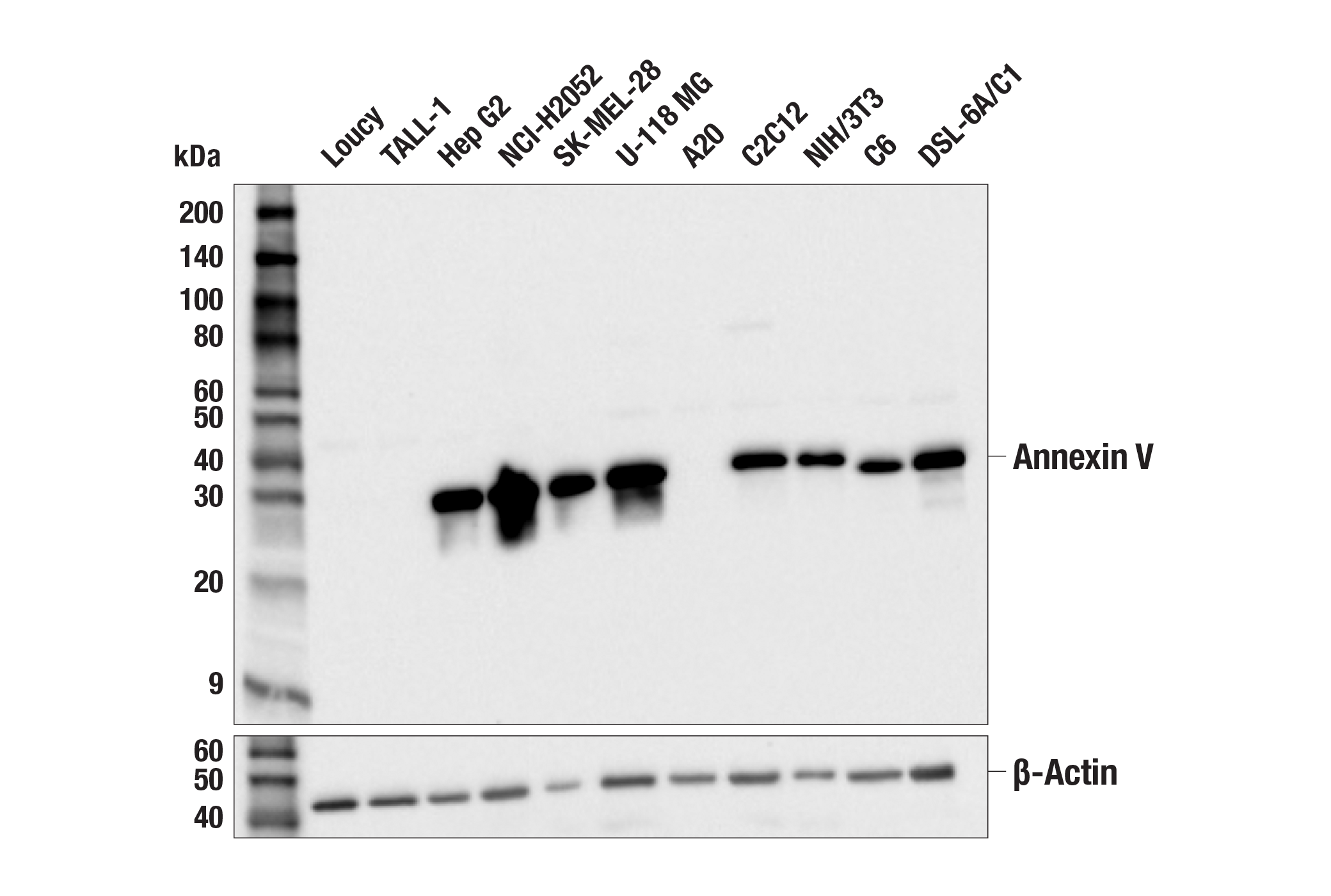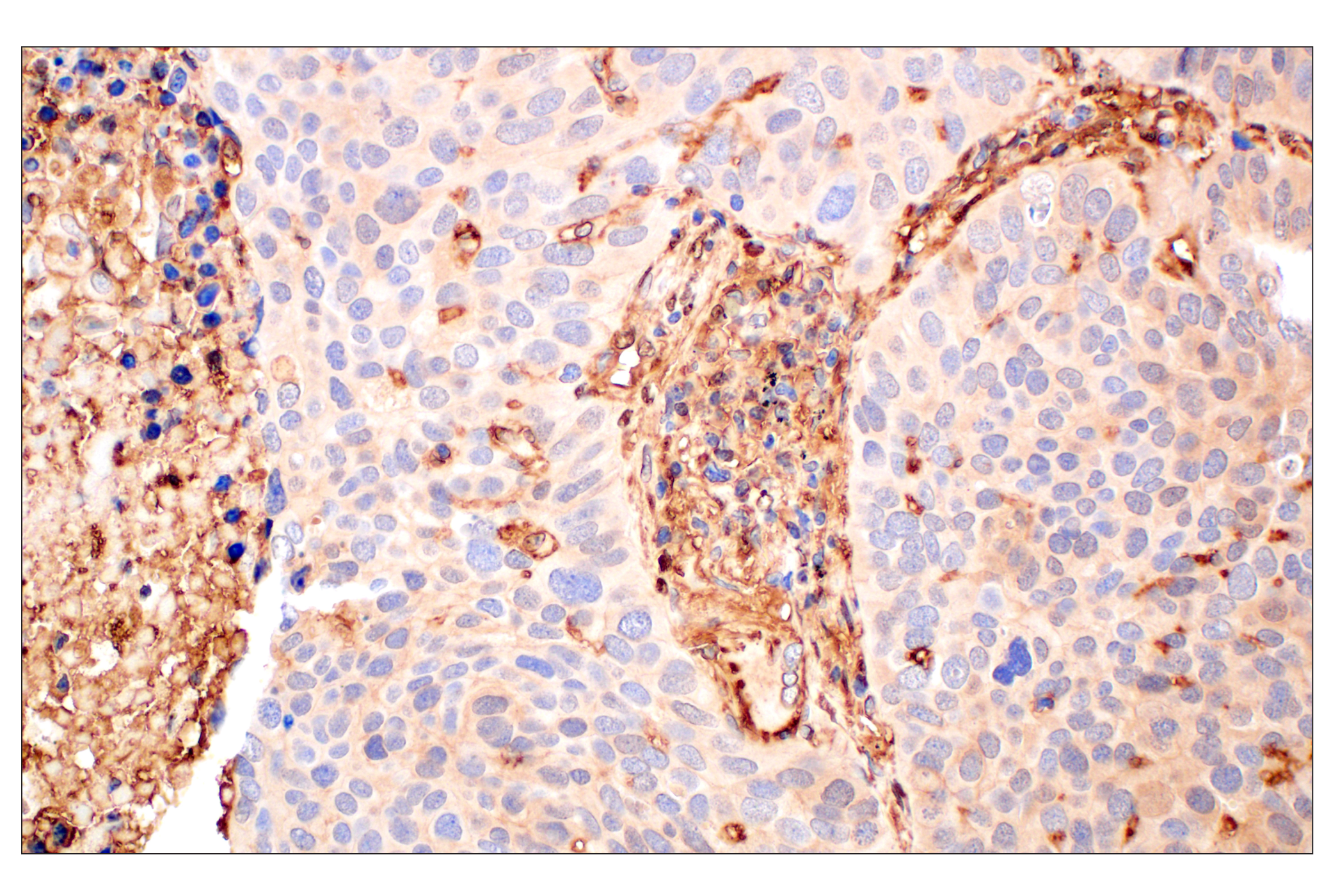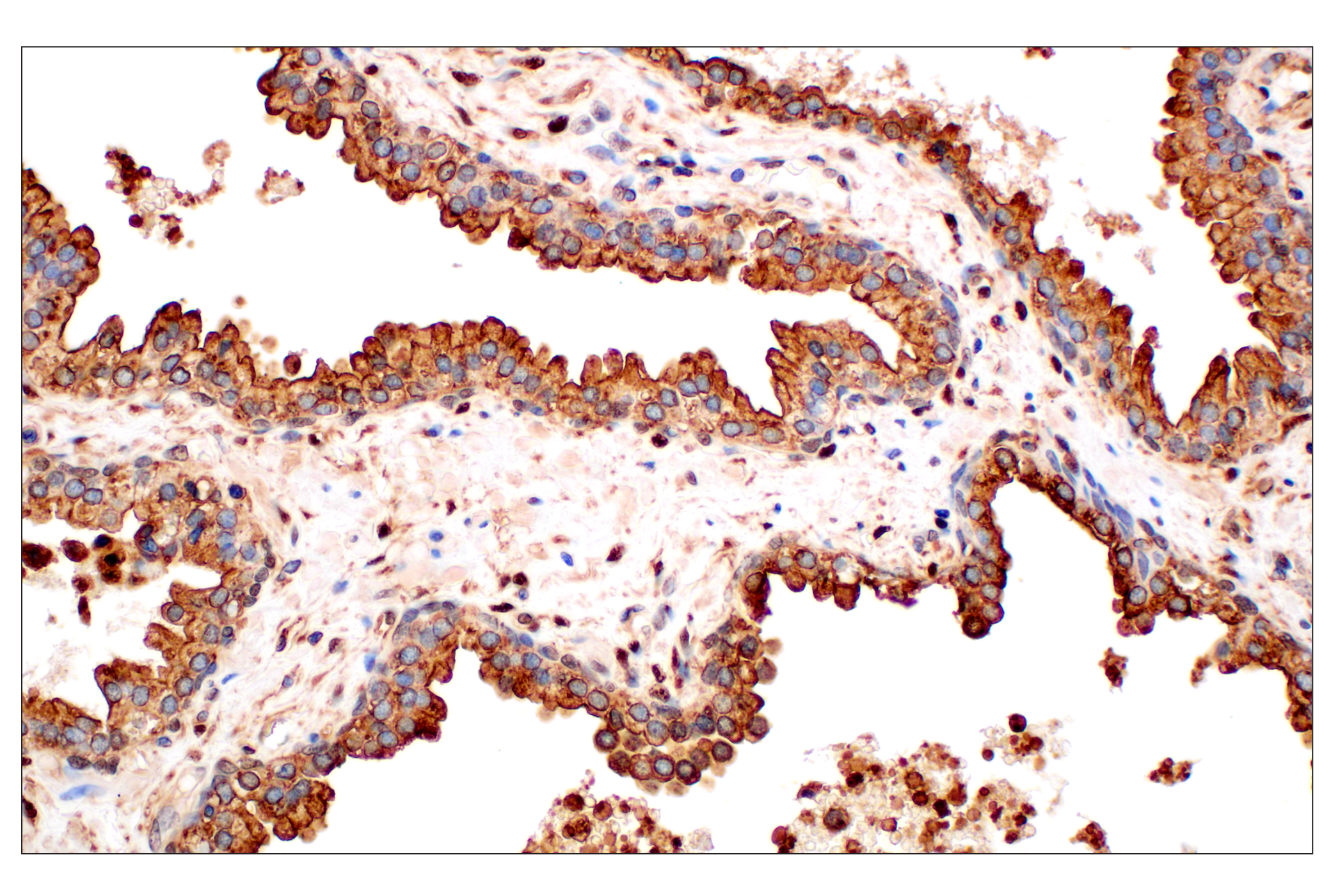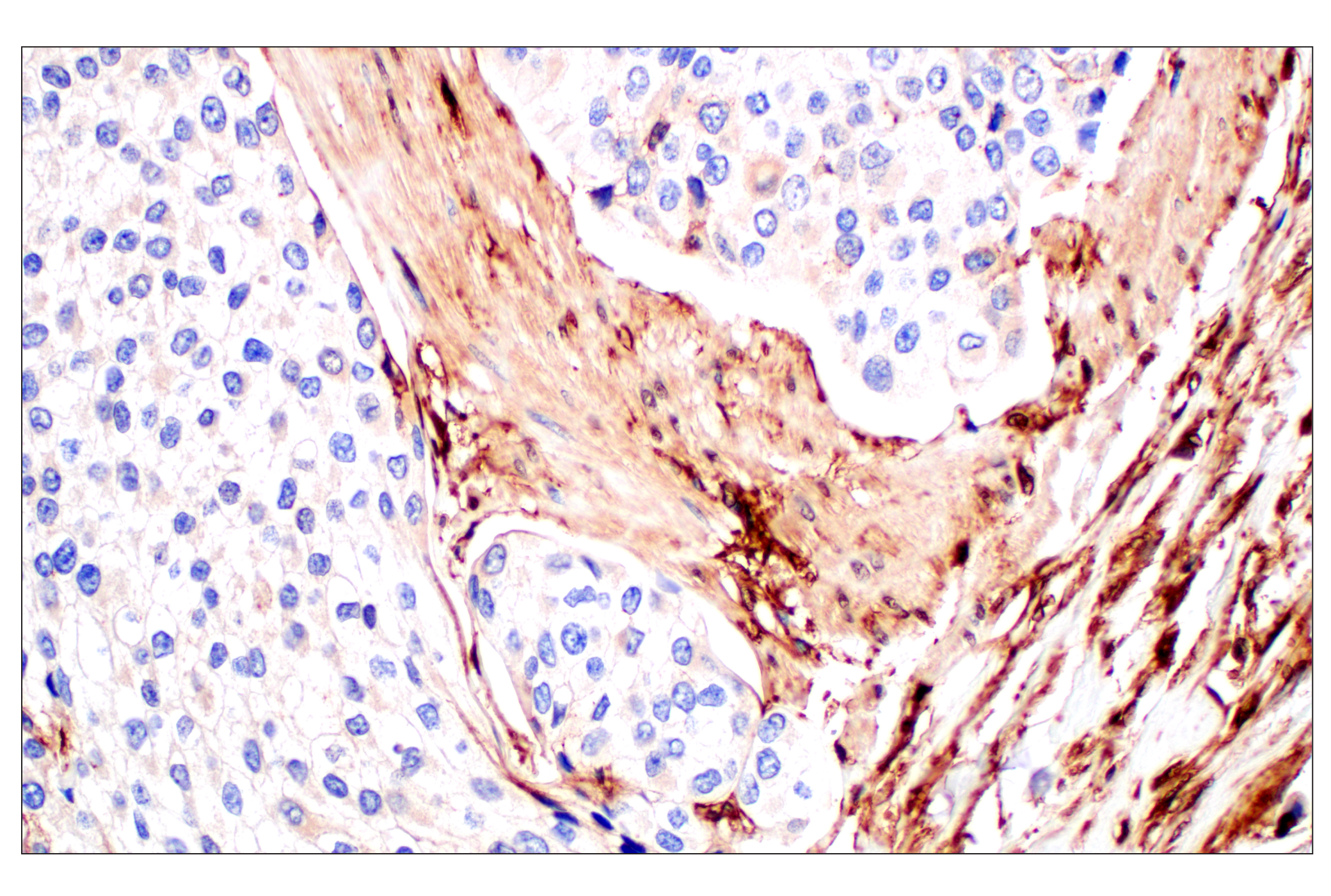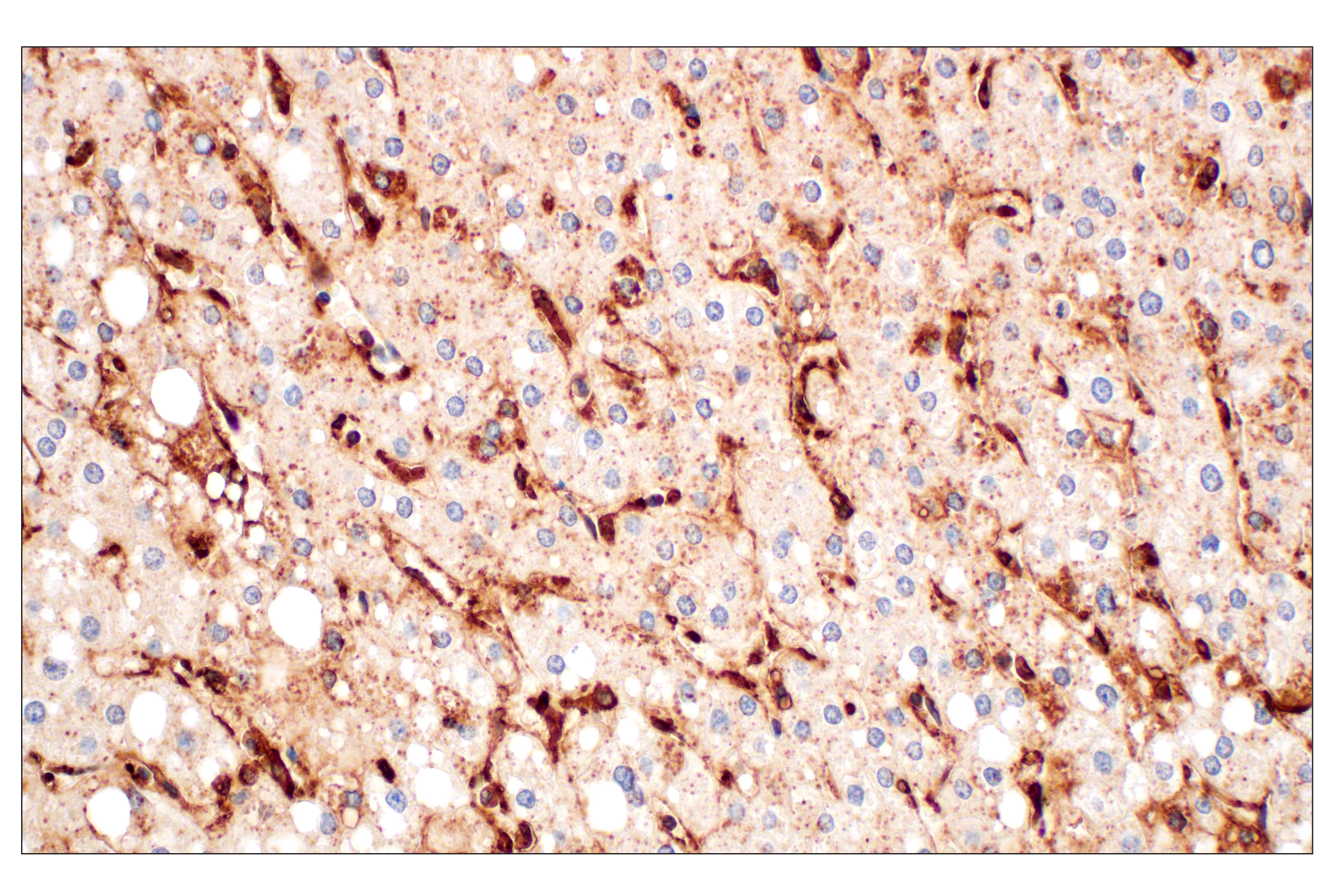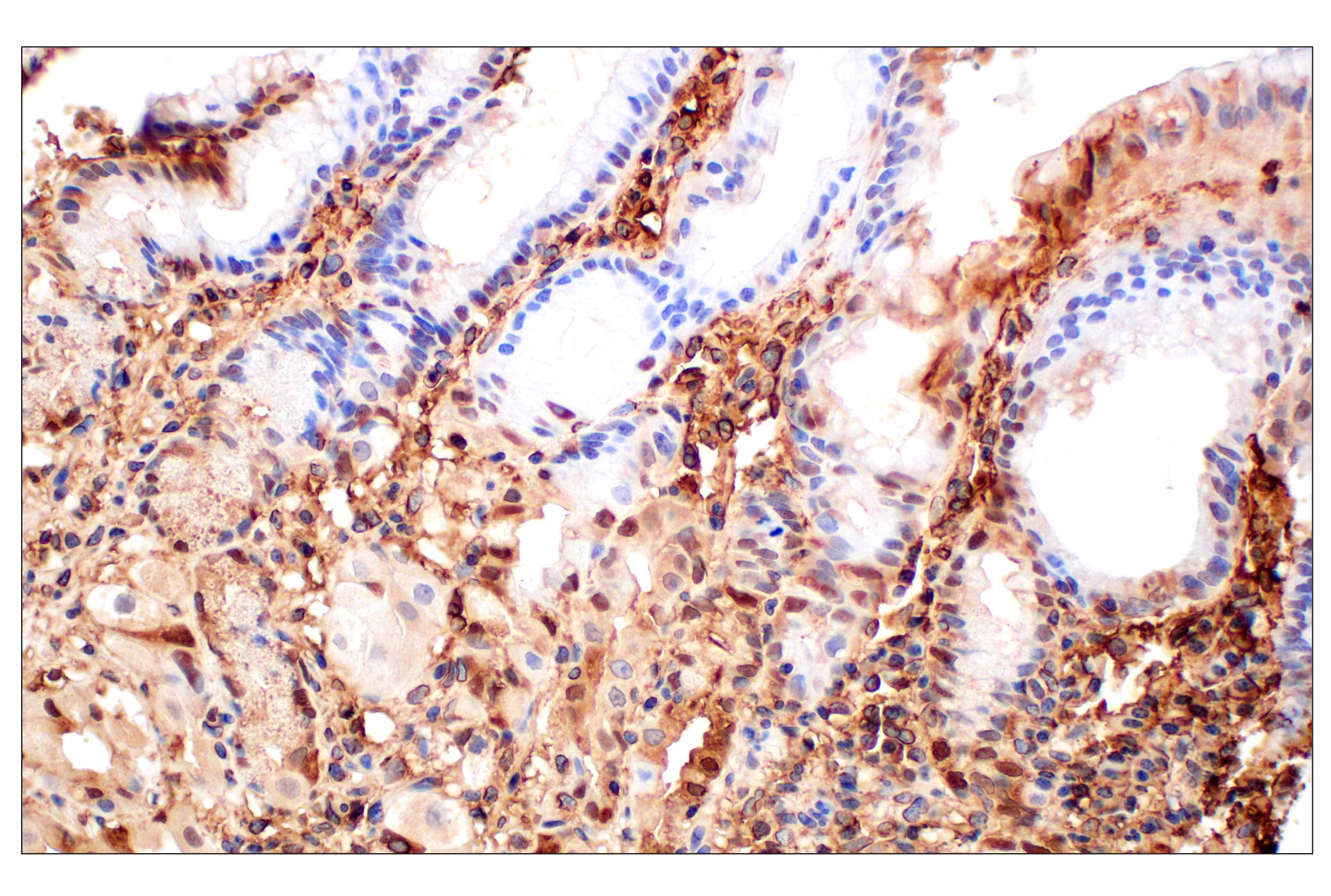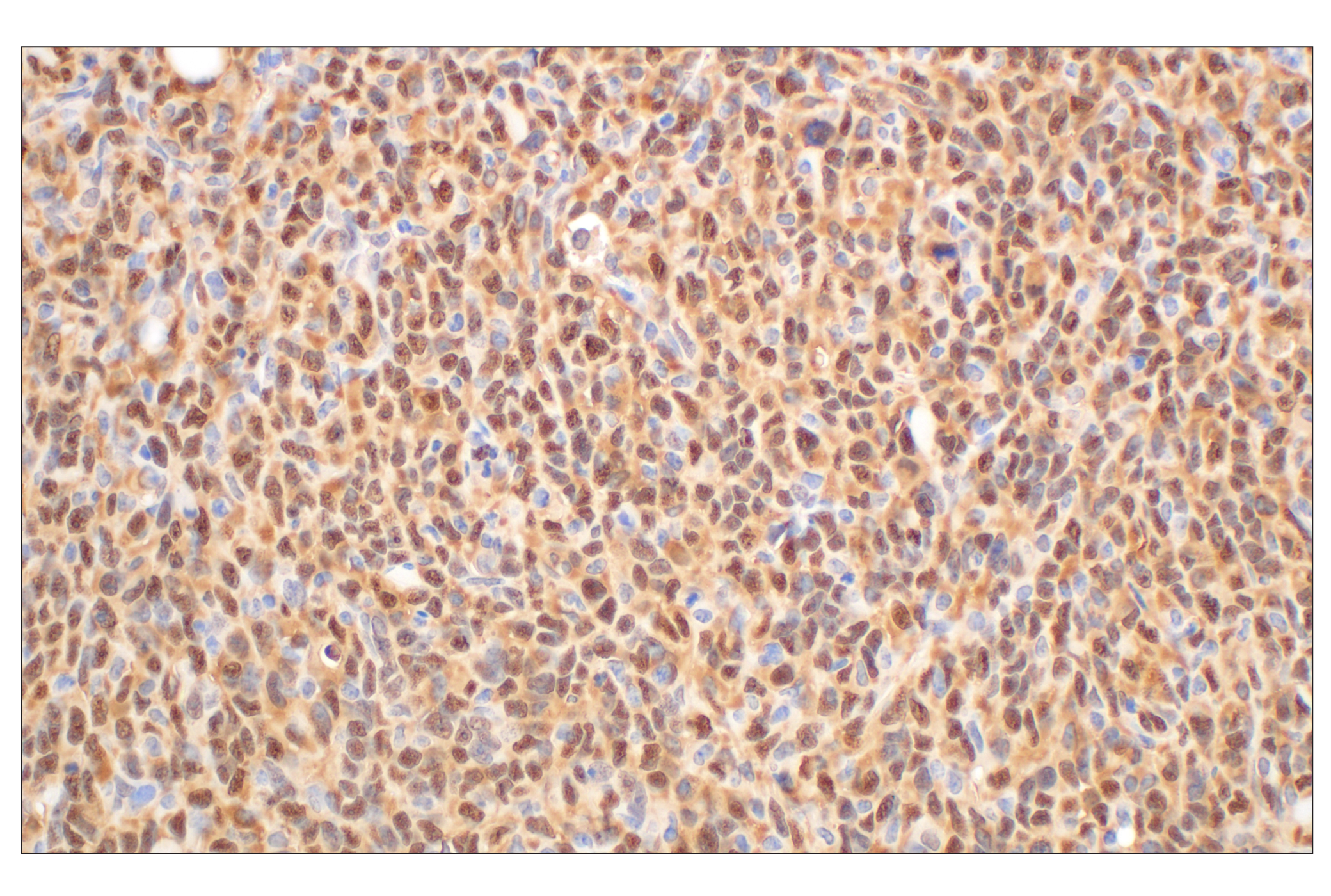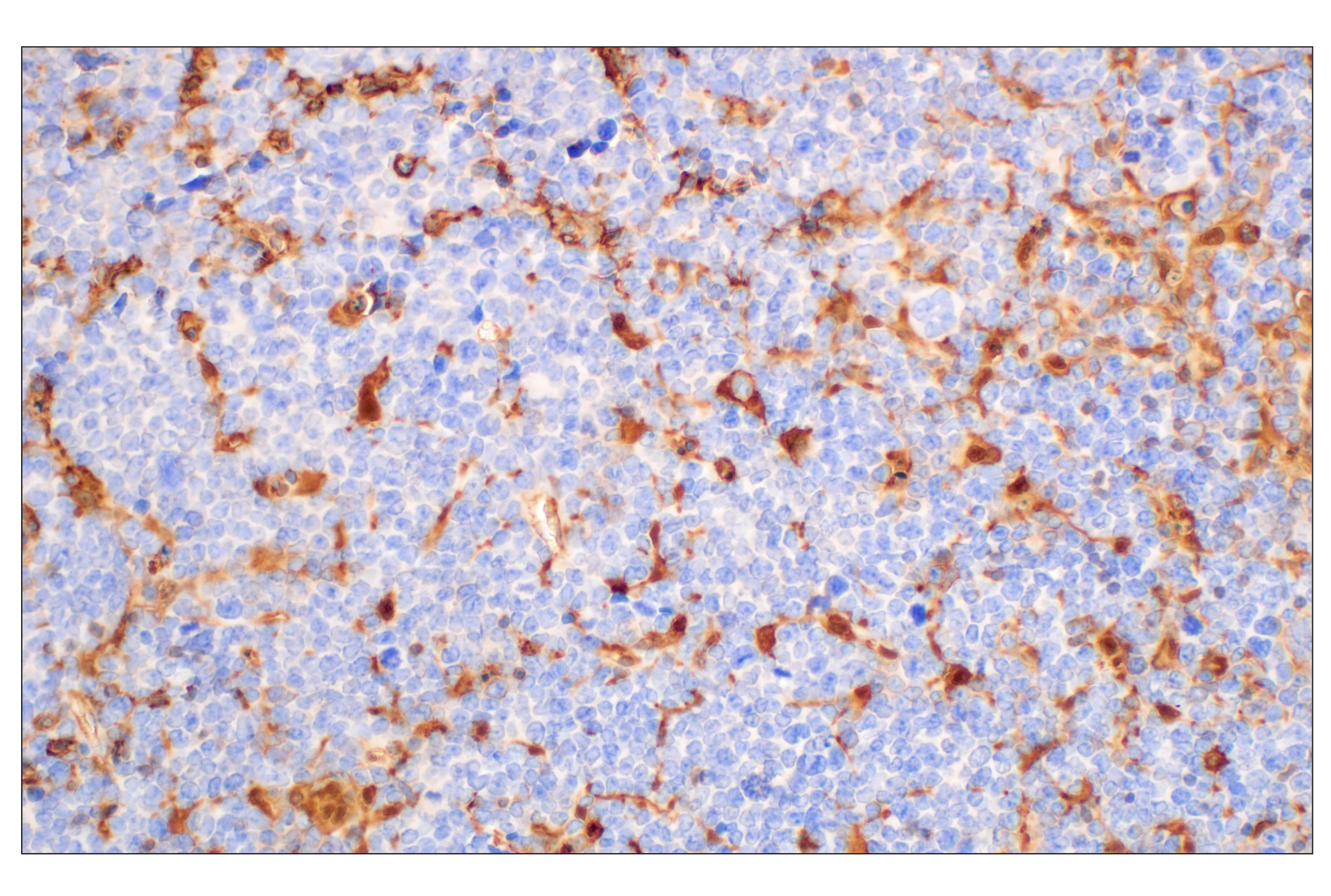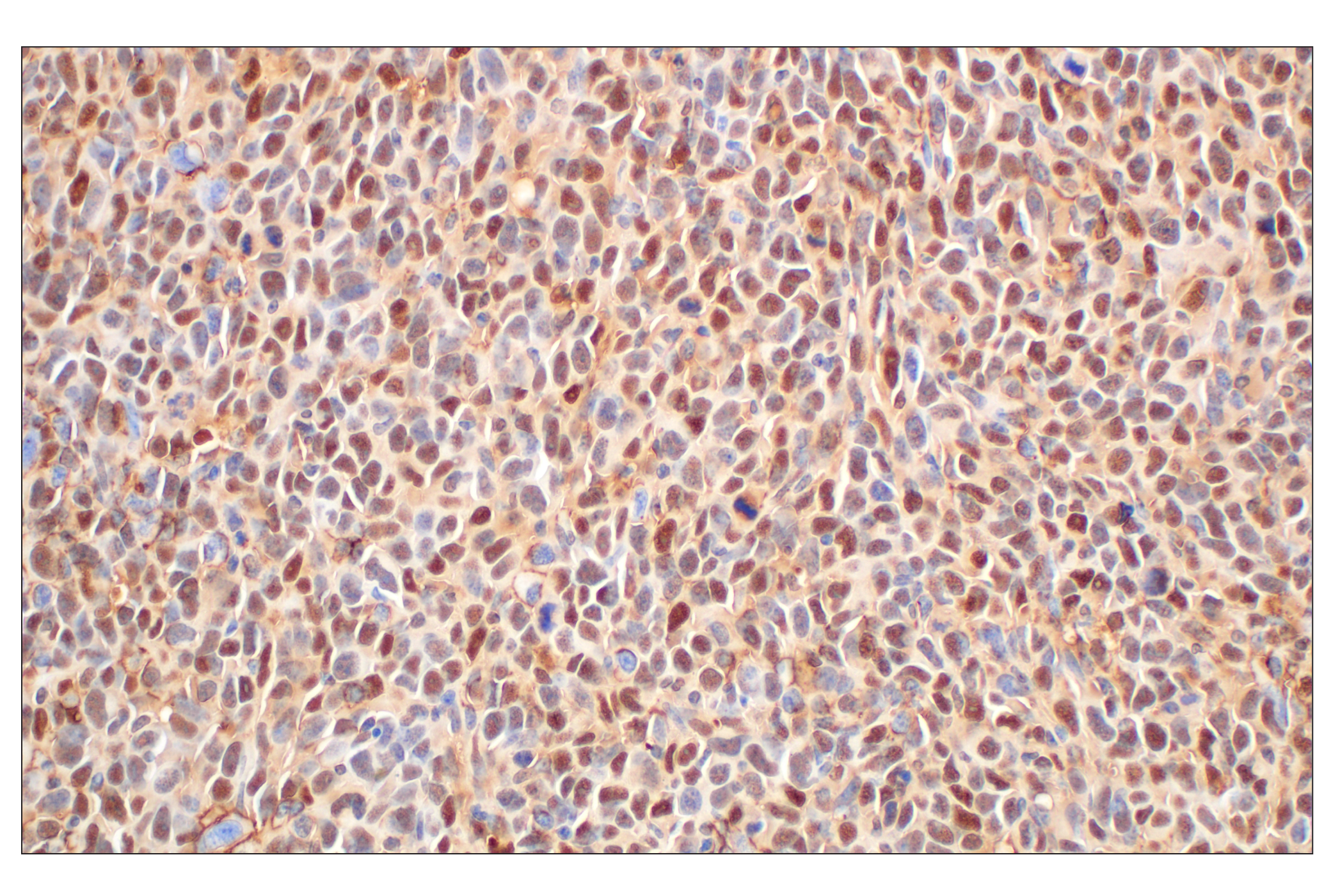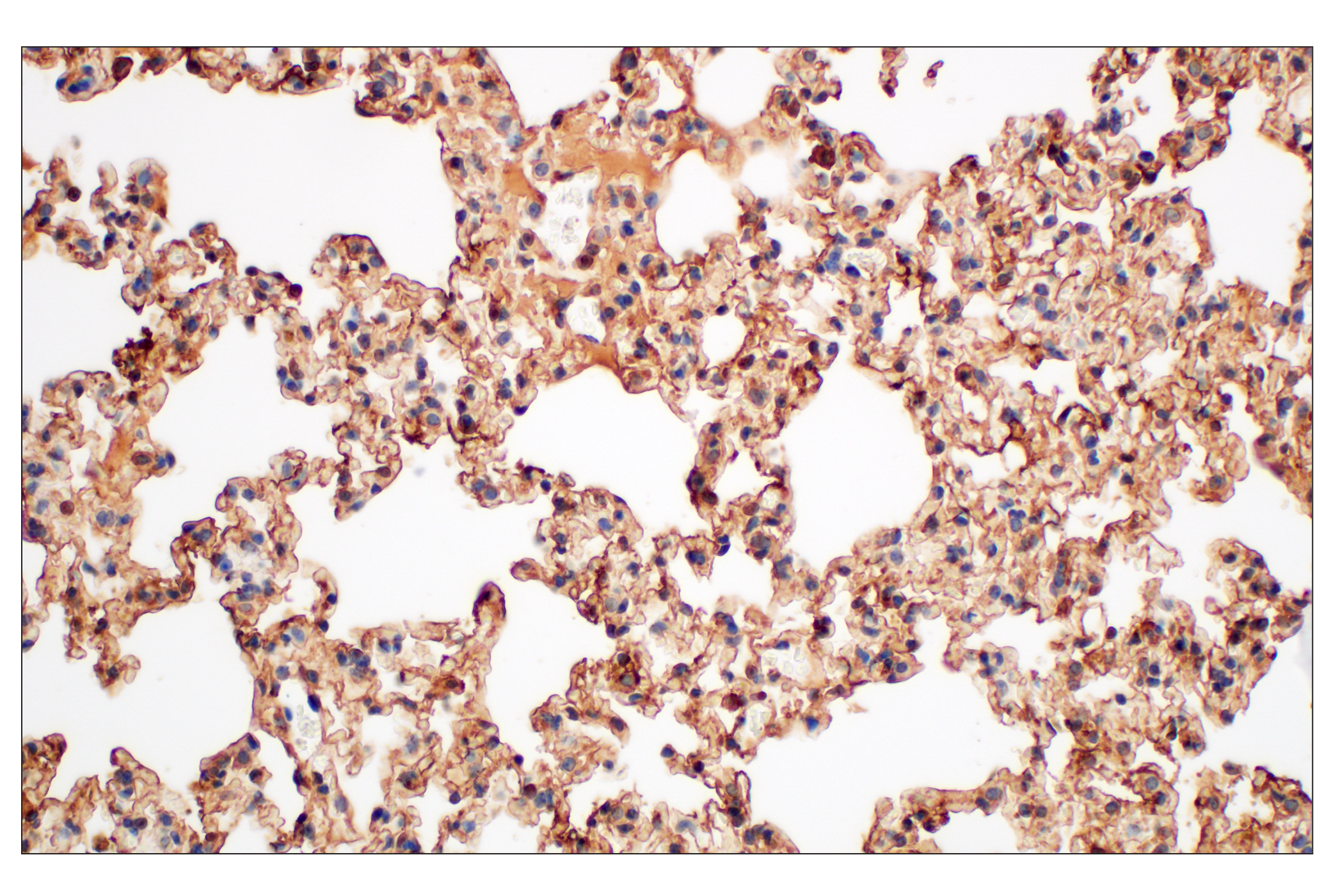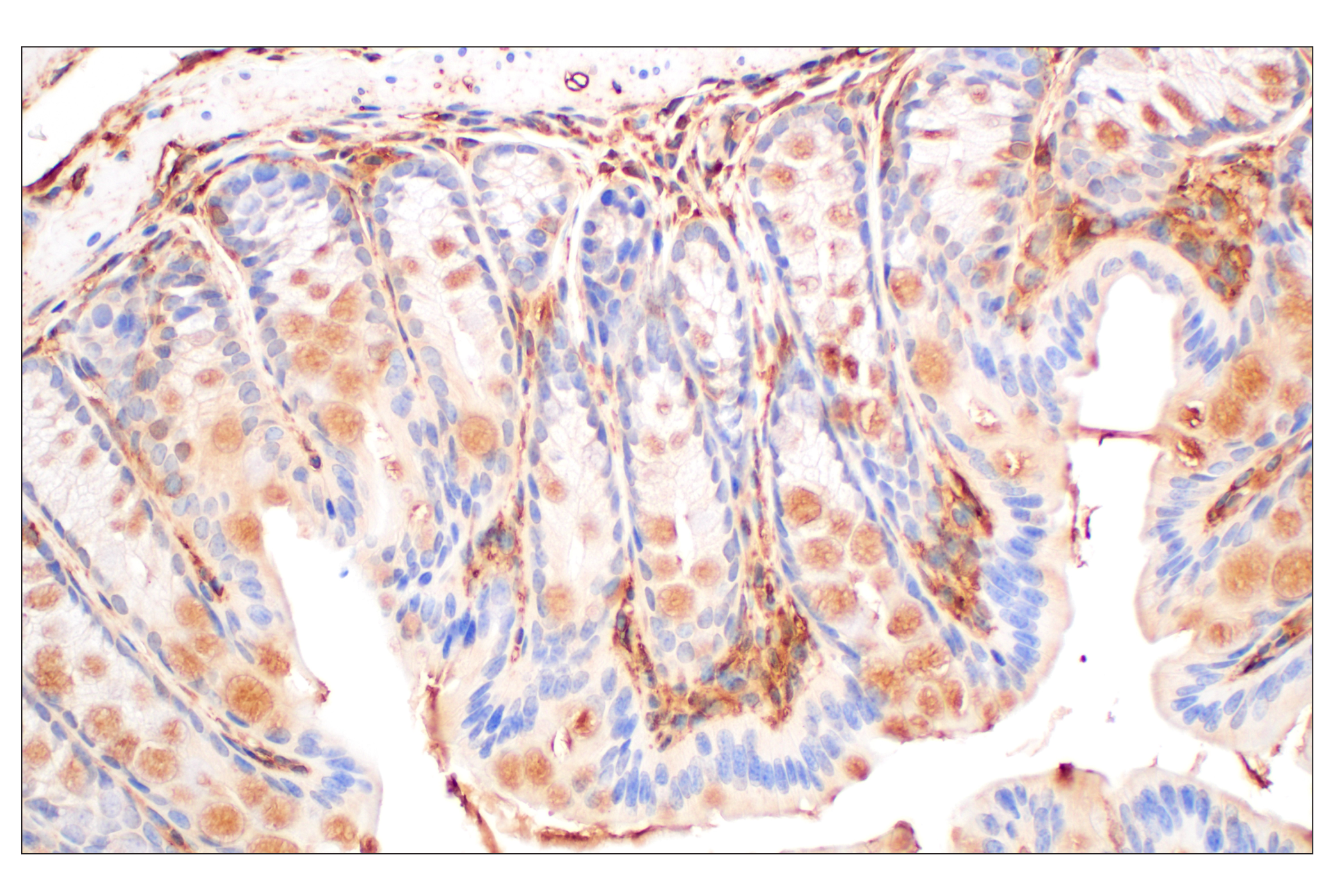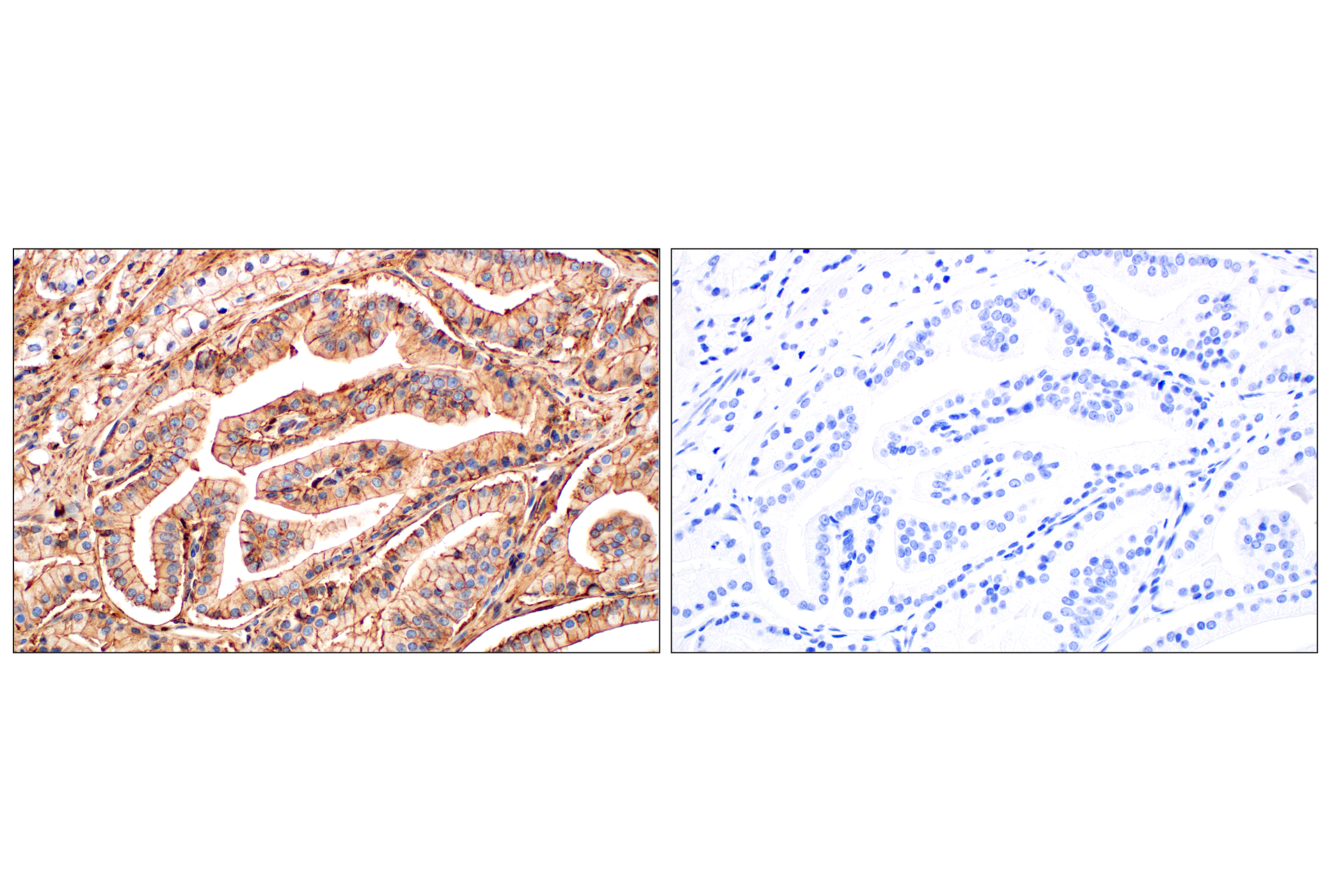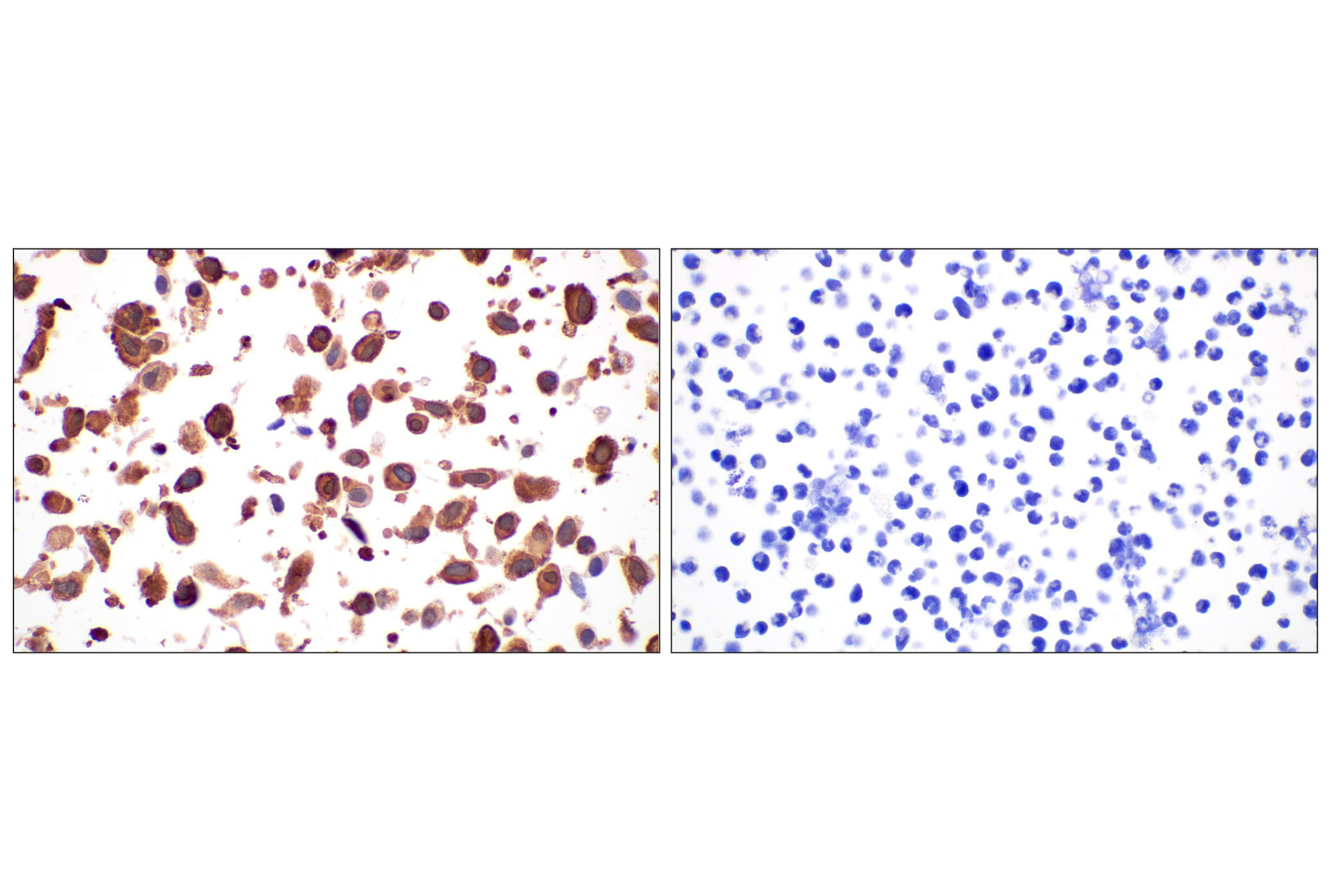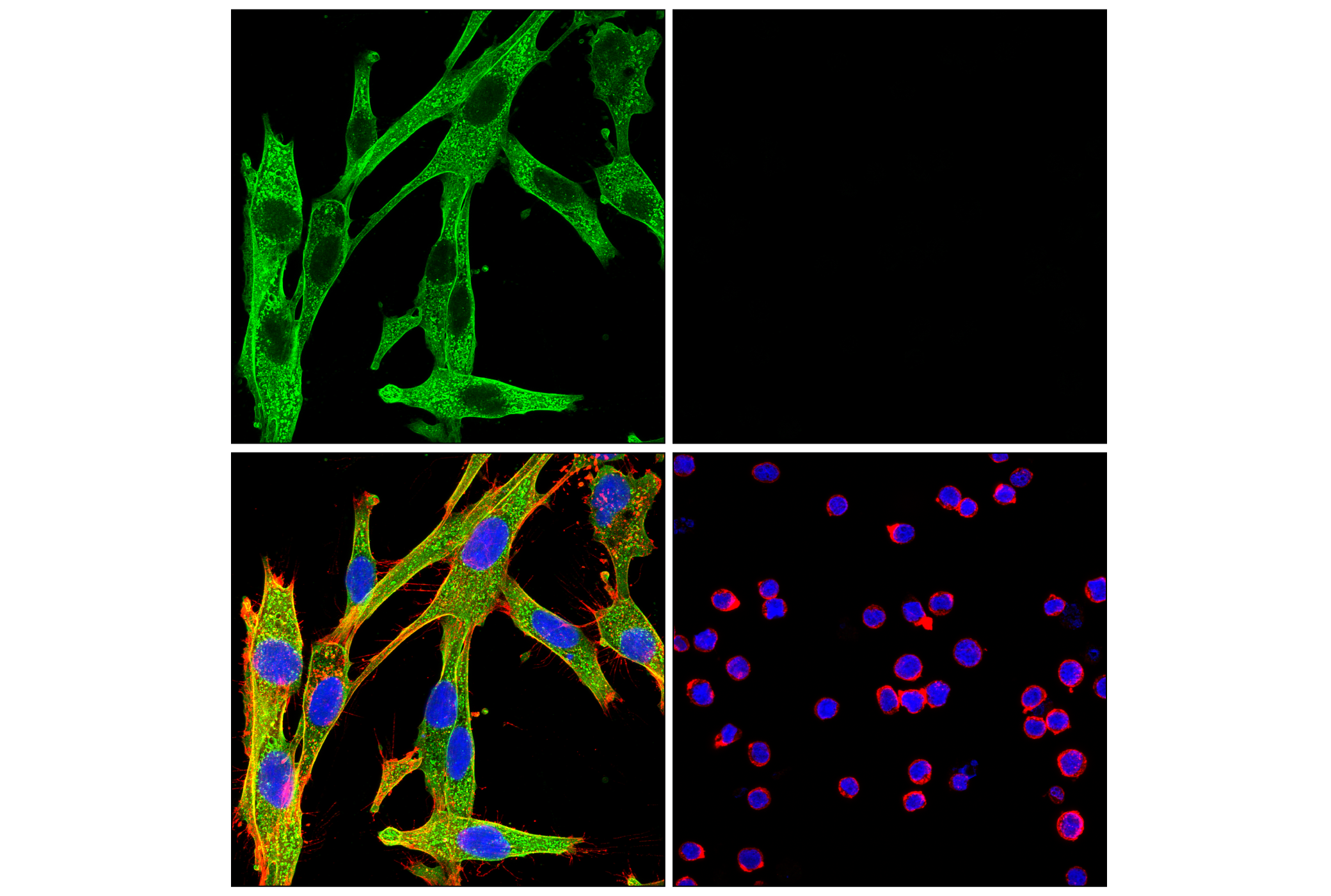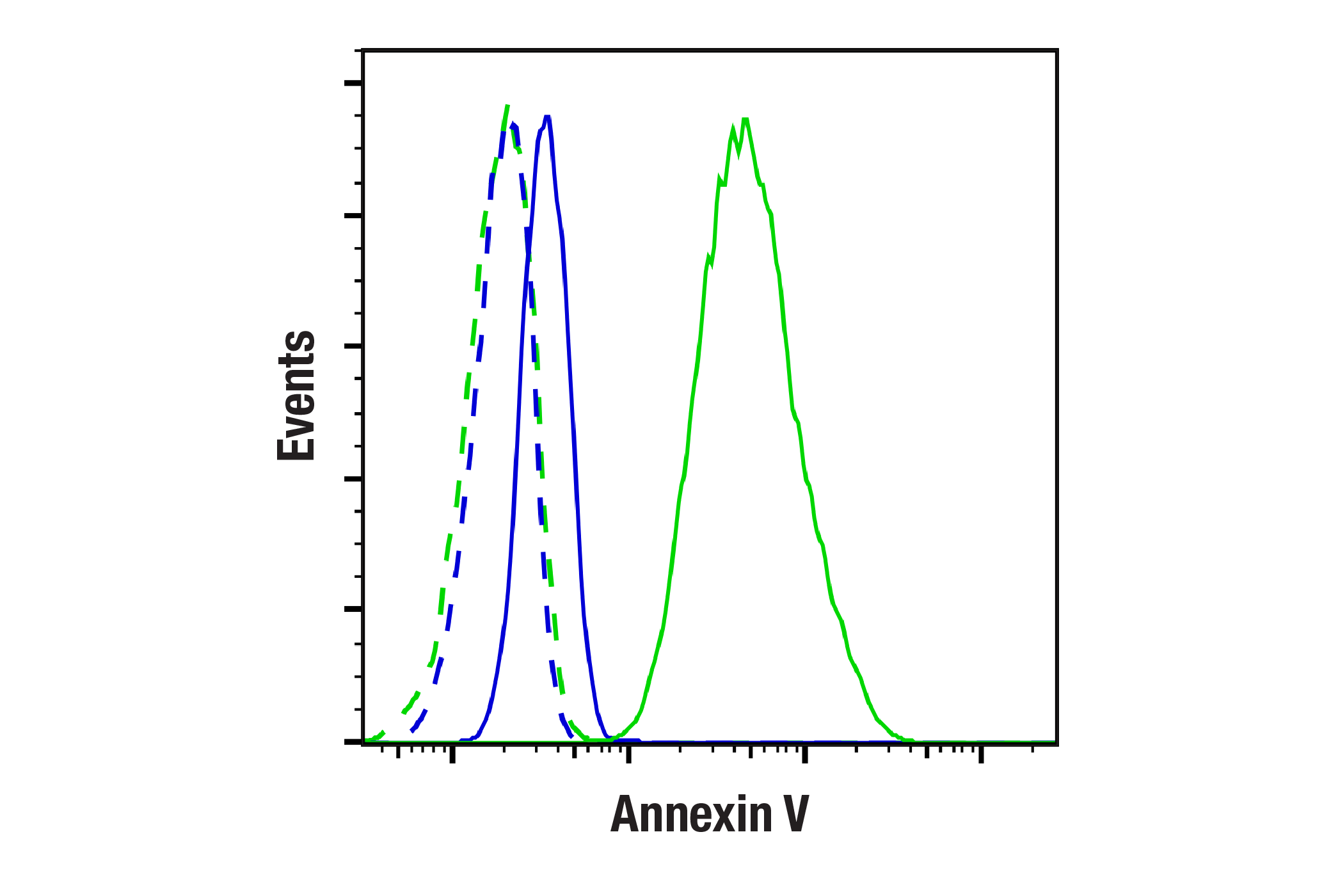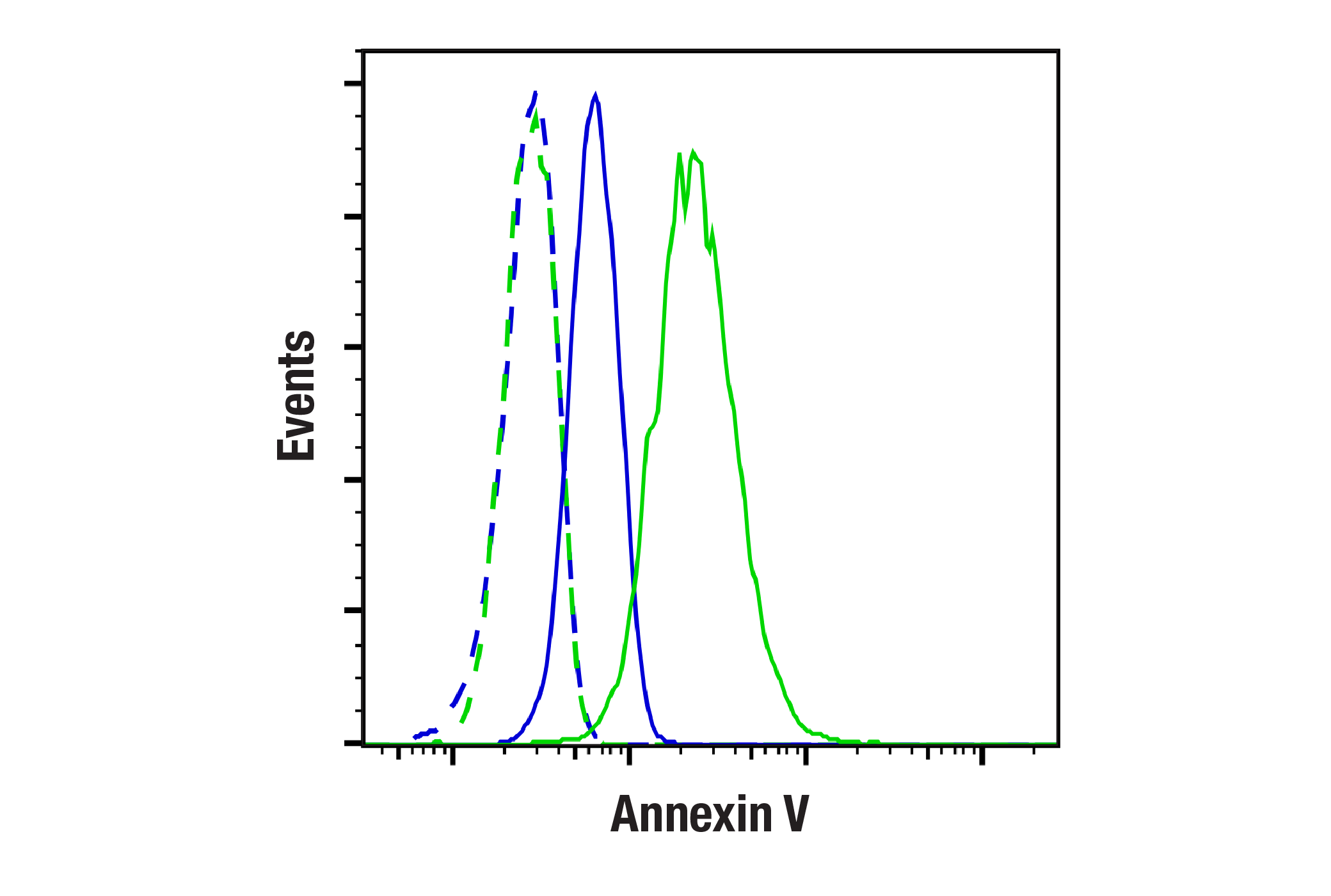WB, IHC-P, IF-IC, FC-FP
H M R
Endogenous
30
Rabbit IgG
#P08758
308
Product Information
Product Usage Information
| Application | Dilution |
|---|---|
| Western Blotting | 1:1000 |
| Immunohistochemistry (Paraffin) | 1:50 - 1:200 |
| Immunofluorescence (Immunocytochemistry) | 1:100 - 1:400 |
| Flow Cytometry (Fixed/Permeabilized) | 1:100 - 1:400 |
Storage
For a carrier free (BSA and azide free) version of this product see product #24122.
Specificity / Sensitivity
Species Reactivity:
Human, Mouse, Rat
Species predicted to react based on 100% sequence homology
The antigen sequence used to produce this antibody shares
100% sequence homology with the species listed here, but
reactivity has not been tested or confirmed to work by CST.
Use of this product with these species is not covered under
our
Product Performance Guarantee.
Pig
Source / Purification
Monoclonal antibody is produced by immunizing animals with a synthetic peptide corresponding to residues surrounding Thr10 of human annexin V protein.
Background
Annexin V, also known as PAP-1 or Lipocortin V, is an ~30 kDa protein that binds to phospholipids in a calcium-dependent manner (1). All annexins contain a putative PKC binding site, but only annexin V has been identified as an inhibitor of this pathway (2). Via direct interaction with VEGFR-2 receptor, annexin V may also signal to regulate vascular endothelial cell proliferation (3). Annexin V preferentially binds phosphatidylserine in competition with prothrombin, leading to inhibition of blood coagulation at sites of injury preceding contact between lipid components and coagulation factors that initiate thrombosis (4-6). The ability of annexin V to bind specifically and robustly to phosphatidylserine makes it an attractive reagent in detecting apoptotic cells (7). Annexin V is inducible by glucocorticoids and can be phosphorylated by tyrosine and serine/threonine kinases (8). It is thought to block the production of inflammation mediators, such as prostaglandins and leukotrienes by inhibiting the release of arachidonic acid from membranes by phospholipase A2 (8).
- Huber, R. et al. (1990) EMBO J 9, 3867-74.
- Cardó-Vila, M. et al. (2003) Mol Cell 11, 1151-62.
- Wen, Y. et al. (1999) Biochem Biophys Res Commun 258, 713-21.
- Koopman, G. et al. (1994) Blood 84, 1415-20.
- London, F. et al. (1996) Biochemistry 35, 16886-97.
- Thiagarajan, P. and Benedict, C.R. (1997) Circulation 96, 2339-47.
- Vermes, I. et al. (1995) J Immunol Methods 184, 39-51.
- Grundmann, U. et al. (1988) Proc Natl Acad Sci USA 85, 3708-12.
Species Reactivity
Species reactivity is determined by testing in at least one approved application (e.g., western blot).
Western Blot Buffer
IMPORTANT: For western blots, incubate membrane with diluted primary antibody in 5% w/v nonfat dry milk, 1X TBS, 0.1% Tween® 20 at 4°C with gentle shaking, overnight.
Applications Key
WB: Western Blotting IHC-P: Immunohistochemistry (Paraffin) IF-IC: Immunofluorescence (Immunocytochemistry) FC-FP: Flow Cytometry (Fixed/Permeabilized)
Cross-Reactivity Key
H: human M: mouse R: rat Hm: hamster Mk: monkey Vir: virus Mi: mink C: chicken Dm: D. melanogaster X: Xenopus Z: zebrafish B: bovine Dg: dog Pg: pig Sc: S. cerevisiae Ce: C. elegans Hr: horse GP: Guinea Pig Rab: rabbit All: all species expected
Trademarks and Patents
Limited Uses
Except as otherwise expressly agreed in a writing signed by a legally authorized representative of CST, the following terms apply to Products provided by CST, its affiliates or its distributors. Any Customer's terms and conditions that are in addition to, or different from, those contained herein, unless separately accepted in writing by a legally authorized representative of CST, are rejected and are of no force or effect.
Products are labeled with For Research Use Only or a similar labeling statement and have not been approved, cleared, or licensed by the FDA or other regulatory foreign or domestic entity, for any purpose. Customer shall not use any Product for any diagnostic or therapeutic purpose, or otherwise in any manner that conflicts with its labeling statement. Products sold or licensed by CST are provided for Customer as the end-user and solely for research and development uses. Any use of Product for diagnostic, prophylactic or therapeutic purposes, or any purchase of Product for resale (alone or as a component) or other commercial purpose, requires a separate license from CST. Customer shall (a) not sell, license, loan, donate or otherwise transfer or make available any Product to any third party, whether alone or in combination with other materials, or use the Products to manufacture any commercial products, (b) not copy, modify, reverse engineer, decompile, disassemble or otherwise attempt to discover the underlying structure or technology of the Products, or use the Products for the purpose of developing any products or services that would compete with CST products or services, (c) not alter or remove from the Products any trademarks, trade names, logos, patent or copyright notices or markings, (d) use the Products solely in accordance with CST Product Terms of Sale and any applicable documentation, and (e) comply with any license, terms of service or similar agreement with respect to any third party products or services used by Customer in connection with the Products.
